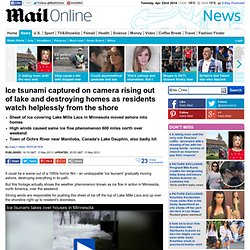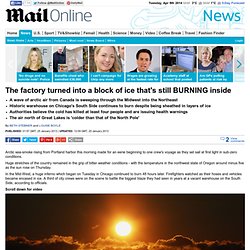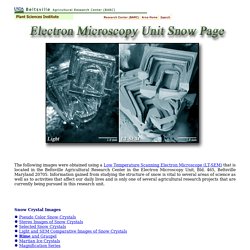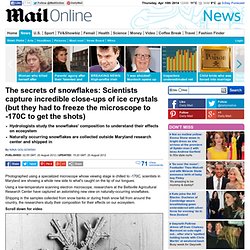

The Big Freeze: January 2014. The Nation's 10 Worst Ice Storms. #10: New Year's 1961 (Northern Idaho) The most destructive ice storms feature heavy ice accumulation, sometimes on the order of several inches, that, when combined with strong winds, bring down trees and power lines, plunge hundreds of thousands into the dark sometimes for several days.

We've collected a list of the top 10 worst ice storms in U.S. history, starting with one in northern Idaho. A three-day ice event ushering in 1961 featuring not only freezing rain, but also occasional freezing fog set a U.S. record ice accumulation of eight inches in north-central Idaho, according to Weather Underground's Christopher Burt (blog). Power outages and tree damage was widespread in this area. Incidentally, one somewhat common ice storm corridor is along the Columbia River, where subfreezing air spilling over the Continental Divide can sometimes remain trapped ahead of a wet Pacific storm.
NEXT > #9: Slippery Super Bowl Next. Ice tsunami captured on camera rising out of lake and destroying homes as residents watch helplessly from the shore. Sheet of ice covering Lake Mille Lacs in Minnesota moved ashore into homesHigh winds caused same ice floe phenomenon 600 miles north over weekendTown of Ochre River near Manitoba, Canada's Lake Dauphin, also badly hit By Daily Mail Reporter Published: 16:19 GMT, 13 May 2013 | Updated: 20:55 GMT, 13 May 2013 It could be a scene out of a 1950s horror film - an unstoppable 'ice tsunami' gradually moving ashore, destroying everything in its path.

But this footage actually shows the weather phenomenon known as ice floe in action in Minnesota, north America, over the weekend. Strong winds are responsible for pushing this sheet of ice off the top of Lake Mille Lacs and up over the shoreline right up to resident's doorsteps. Chicago warehouse: The factory turned into a block of ice that's still BURNING inside. Grim conditions: A firefighter works next to an ice-encrusted firetruck at the scene of a four-alarm blaze in a brick business building in Lawrence, Massachusetts on Thursday night Frozen in time: Ice-encrusted Dennis Ring, of the Middleton Fire Department, just minutes after he was sprayed with the hose during the Massachusetts blaze (right) Life in a cold climate: Much of the Midwest, and especially the Great Lakes region, was hit with another day of punishing cold Blistering cold: A deep arctic freeze has locked parts of the Midwest to the Northeast in below freezing temperatures as seen with this frozen fountain in New York City's Bryant Park on Wednesday The big freeze: Firefighters spray down hot spots on an ice covered warehouse that caught fire Tuesday night in Chicago; temperatures across the country plummeted last night as the mercury climbed as low as 50 degrees below freezing.

Emu.arsusda: Electron Microscopy Unit Snow Page. The following images were obtained using a Low Temperature Scanning Electron Microscope (LT-SEM) that is located in the Beltsville Agricultural Research Center in the Electron Microscopy Unit, Bld. 465, Beltsville Maryland 20705.

Information gained from studying the structure of snow is vital to several areas of science as well as to activities that affect our daily lives and is only one of several agricultural research projects that are currently being pursued in this research unit. Pseudo Color Snow Crystals Stereo Images of Snow Crystals Selected Snow Crystals Light and SEM Comparative Images of Snow Crystals Rime and Graupel Martian Ice Crystals Magnification Series Magono and Lee Classification Part 1 Magono and Lee Classification Part 2 Intensive Study Area: Saint Louis Creek. Incredible shots of snowflakes in an electron microscope. Hydrologists study the snowflakes' composition to understand their effects on ecosystemNaturally occurring snowflakes are collected outside Maryland research center and shipped in By Nina Golgowski Published: 02:55 GMT, 20 August 2012 | Updated: 15:20 GMT, 20 August 2012 Photographed using a specialized microscope whose viewing stage is chilled to -170C, scientists in Maryland are showing a whole new side to what's caught on the tip of our tongues.

Using a low-temperature scanning electron microscope, researchers at the Beltsville Agricultural Research Center have captured an astonishing new view on naturally-occurring snowflakes. Shipping in the samples collected from snow banks or during fresh snow fall from around the country, the researchers study their composition for their effects on our ecosystem. Scroll down for video. Famous Frosts and Frost Fairs in Great Britain: Chronicled from the Earliest to the Present Time.